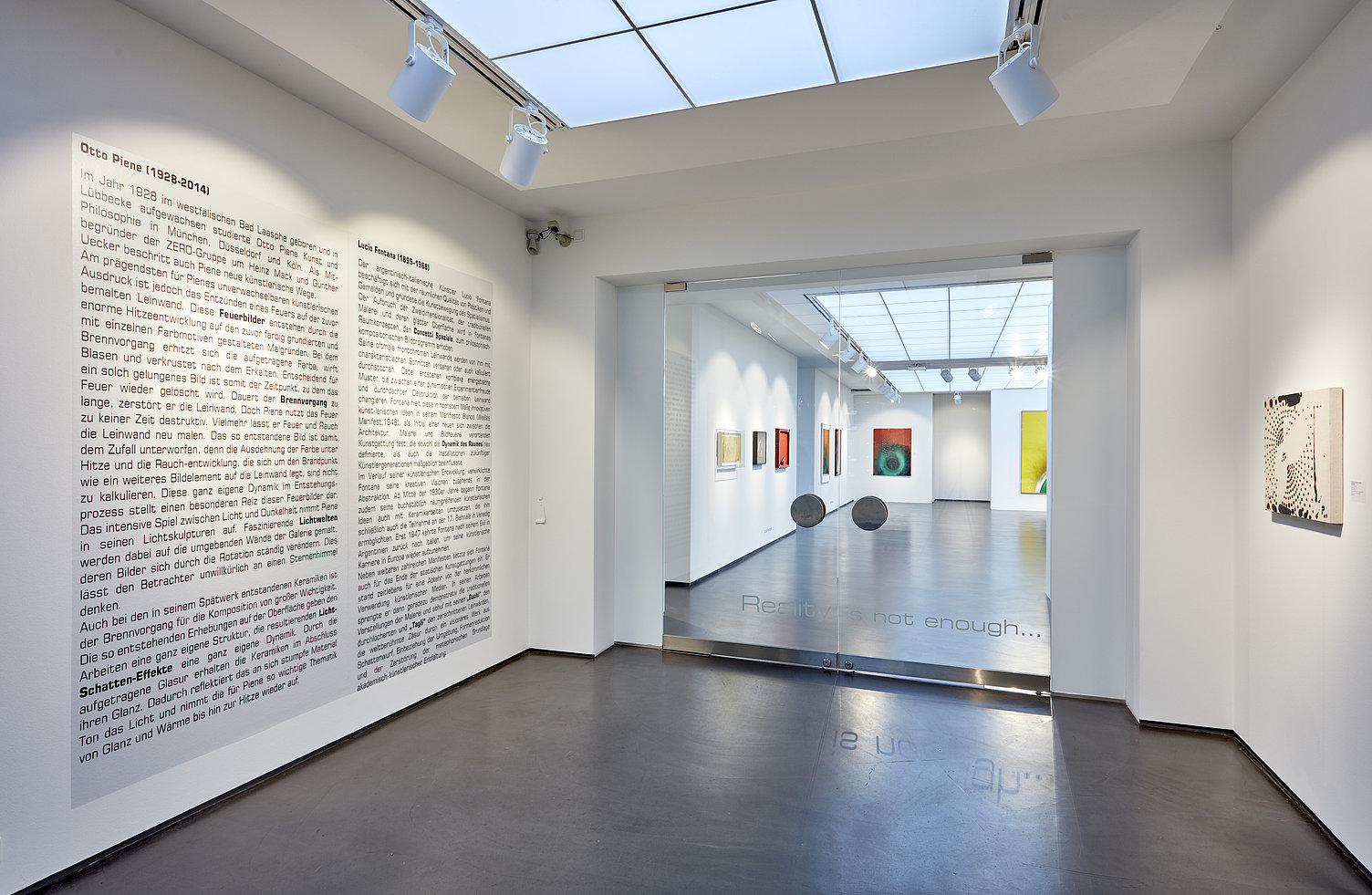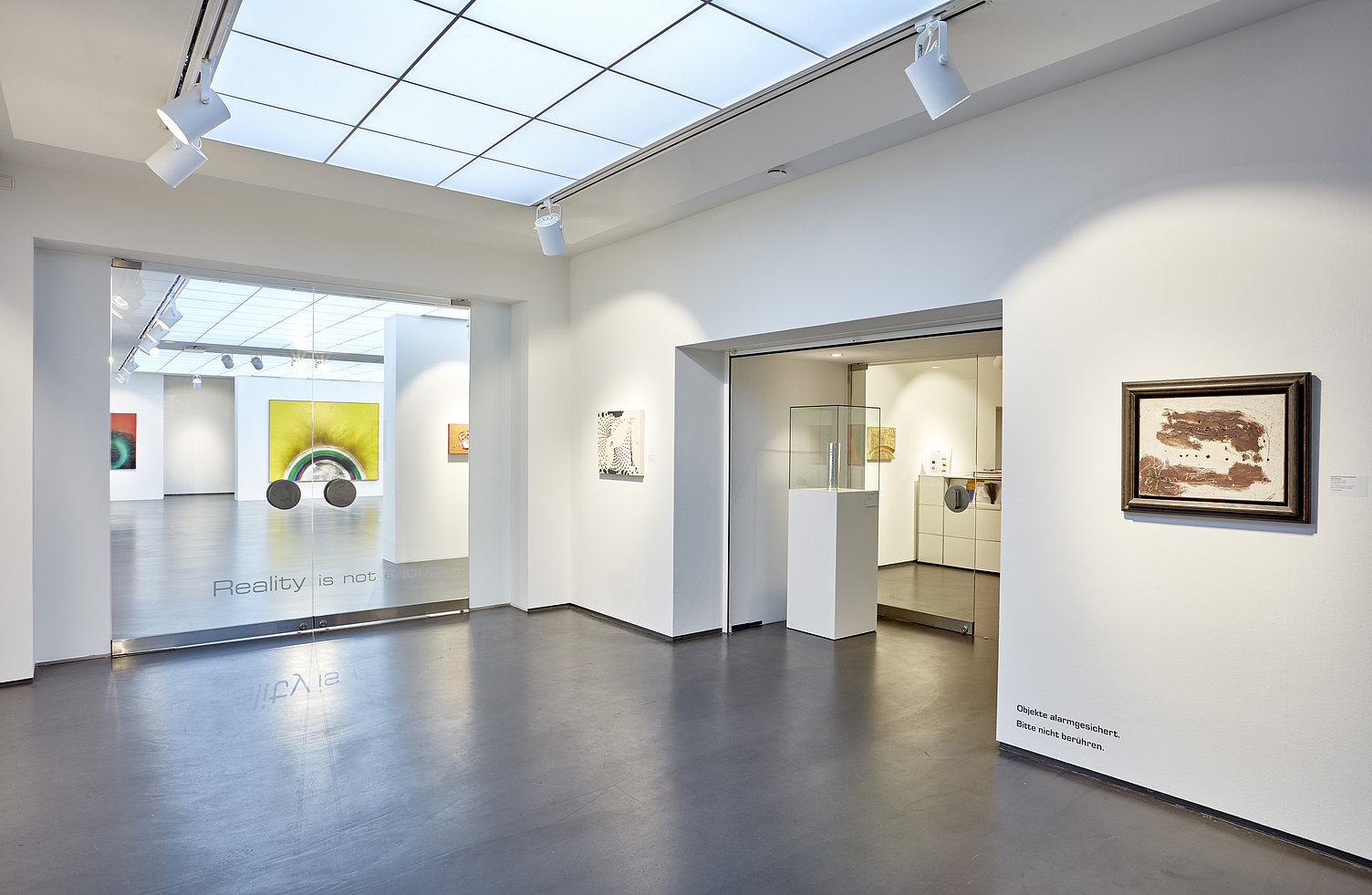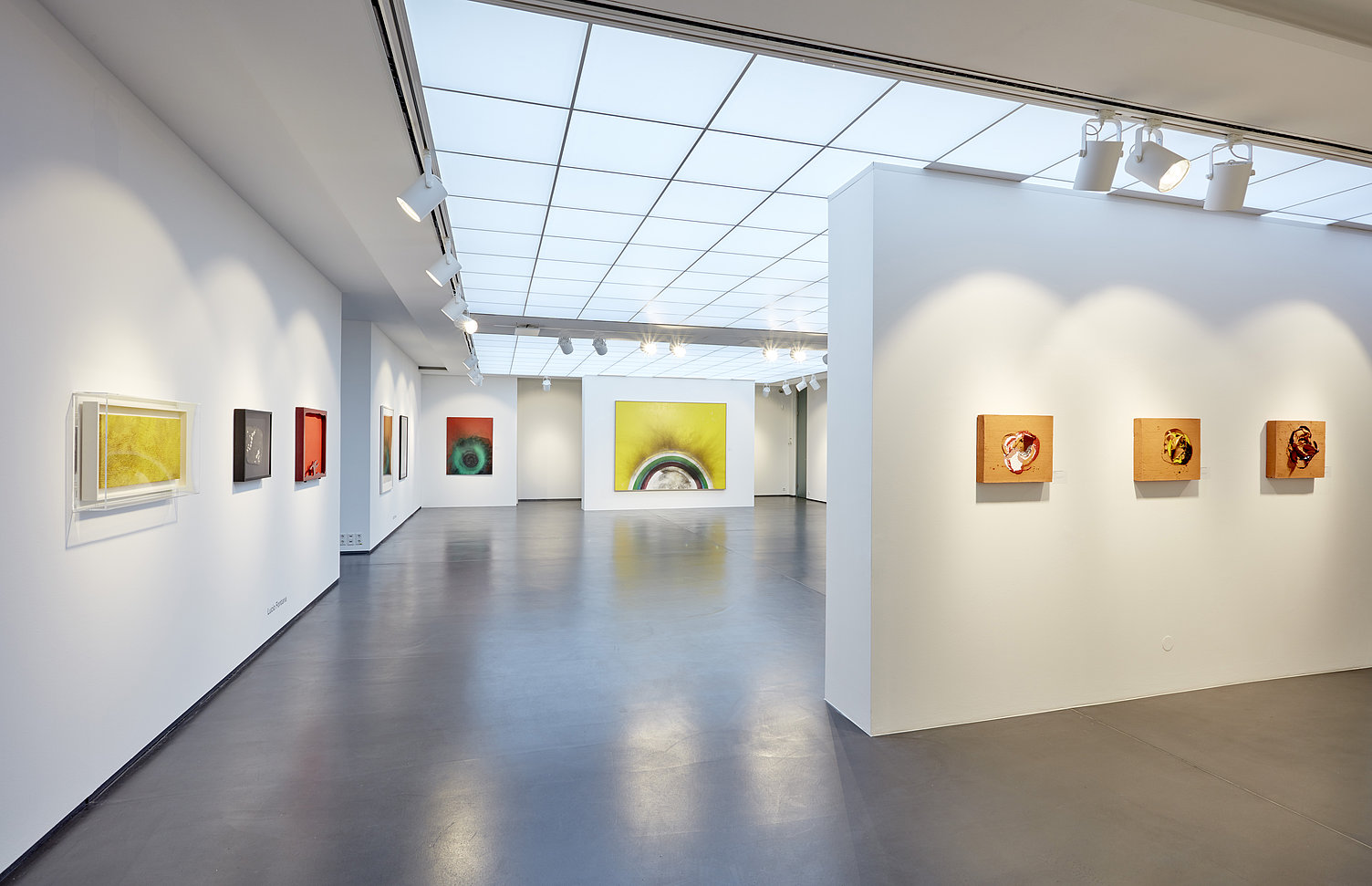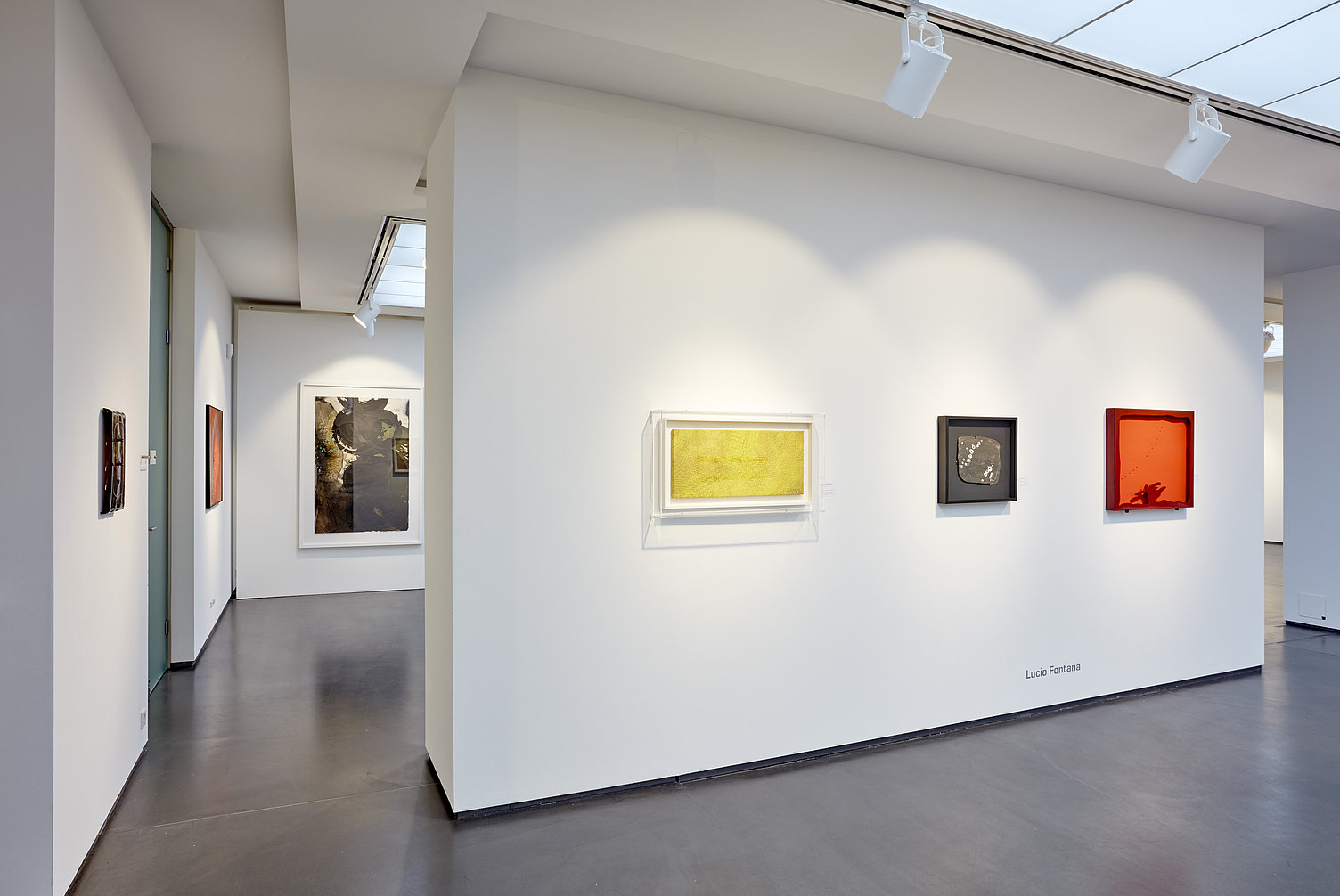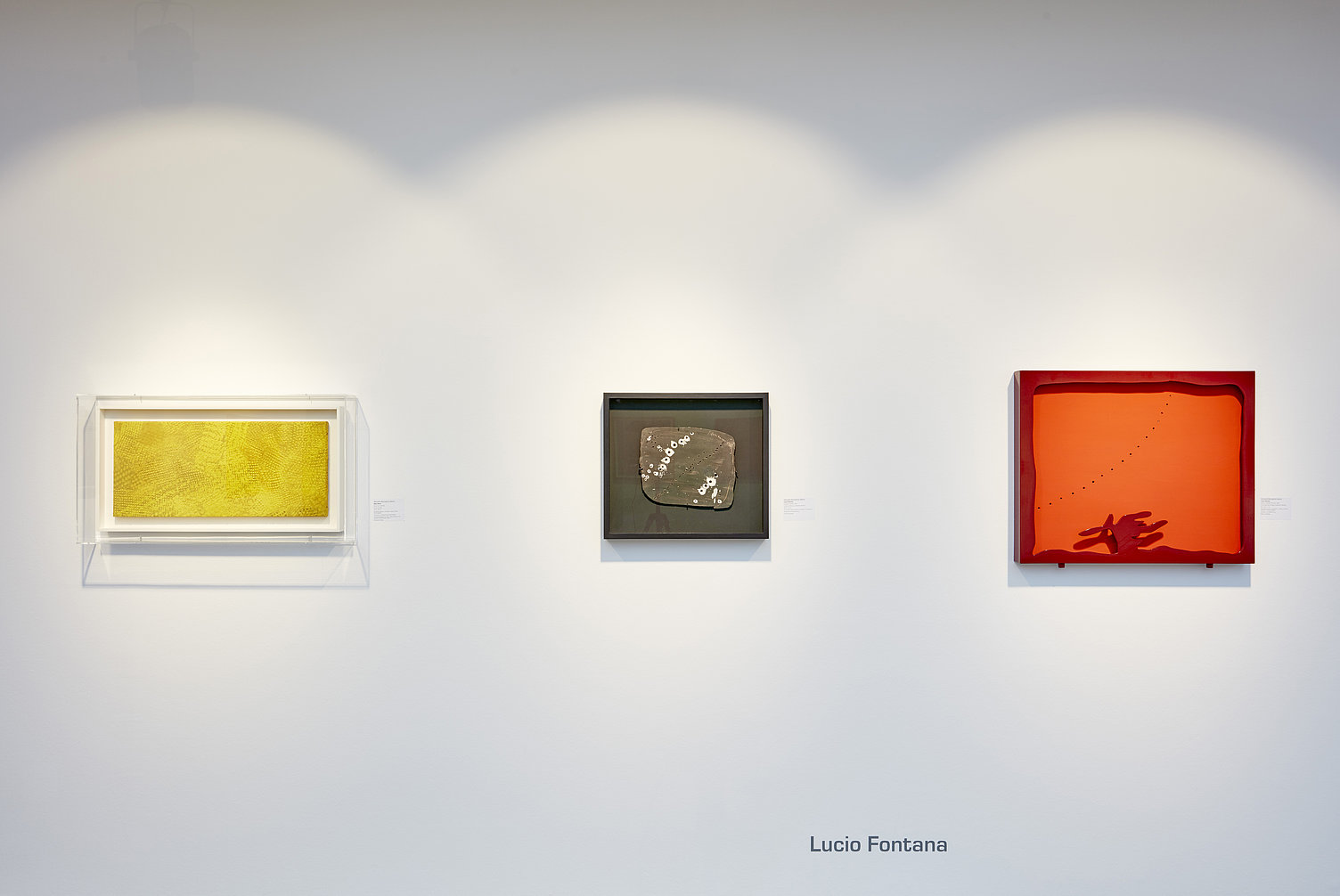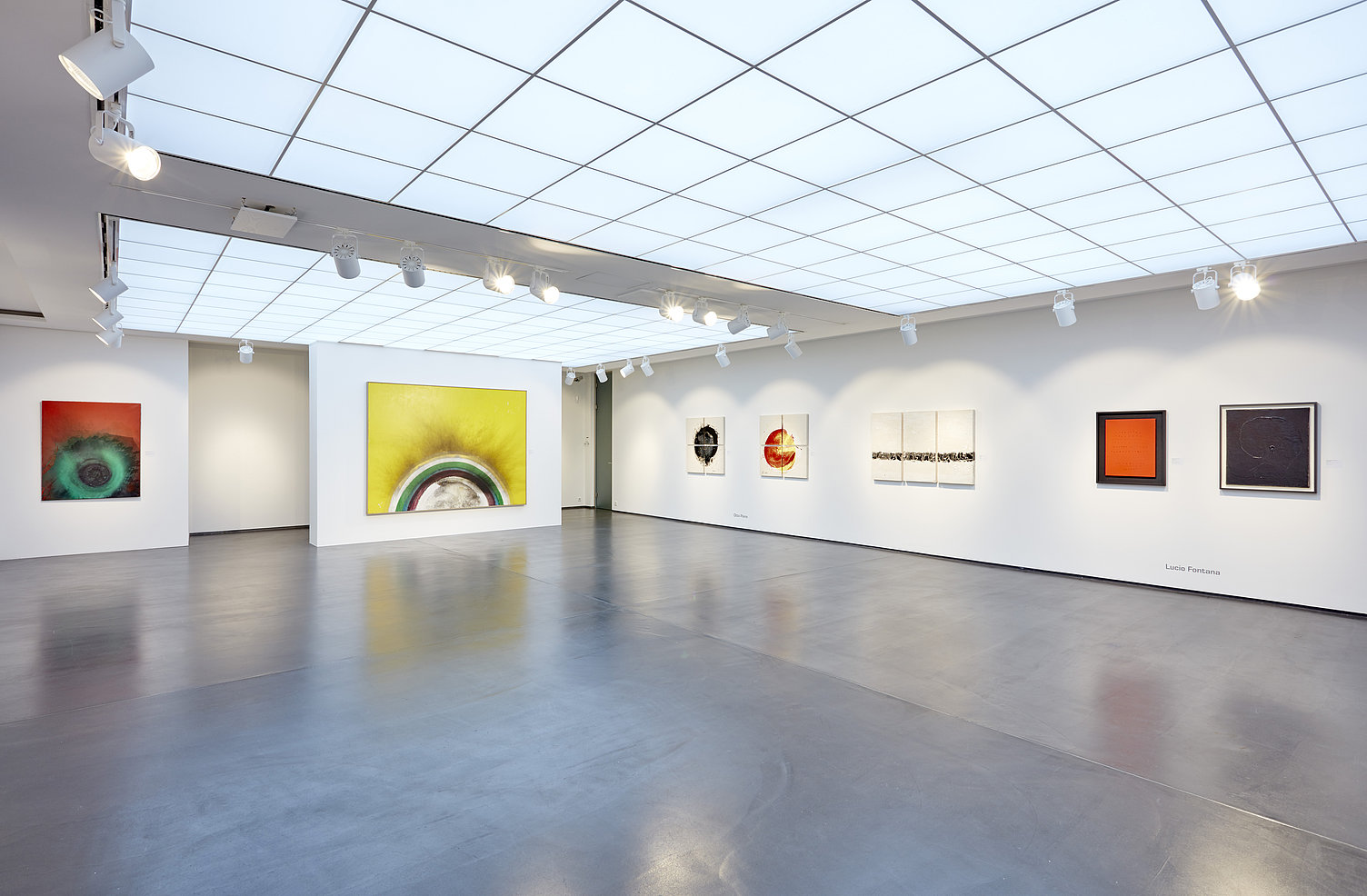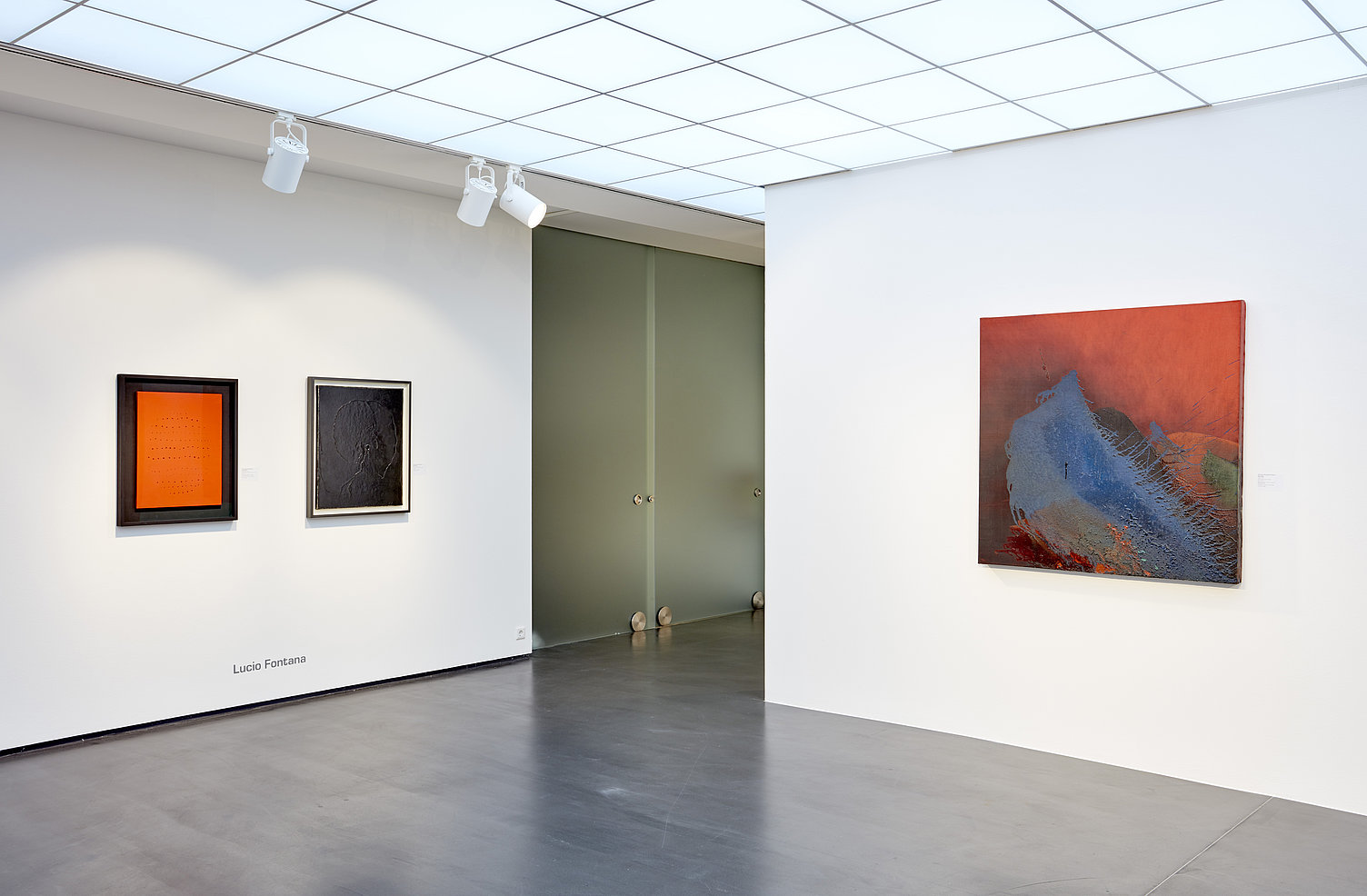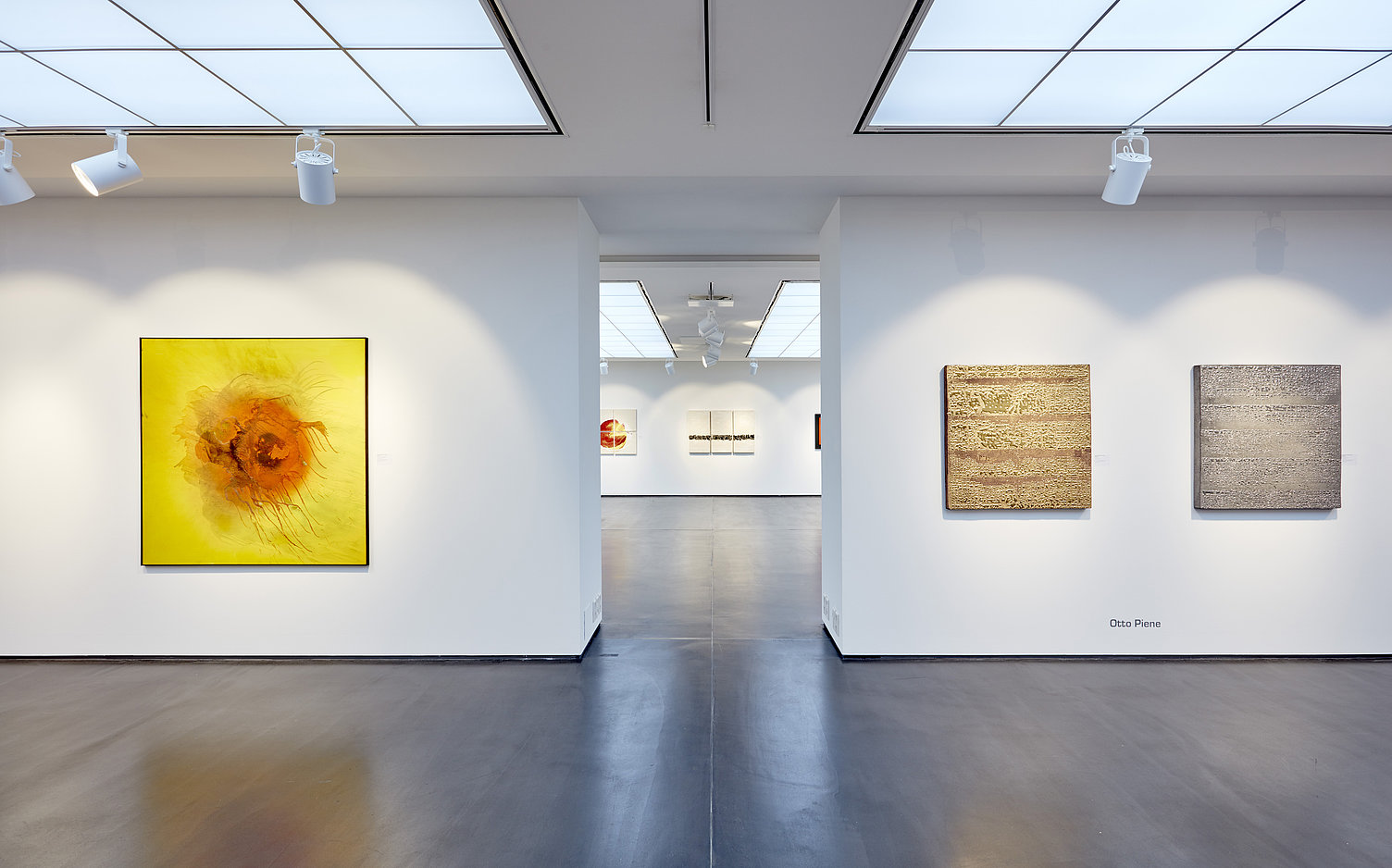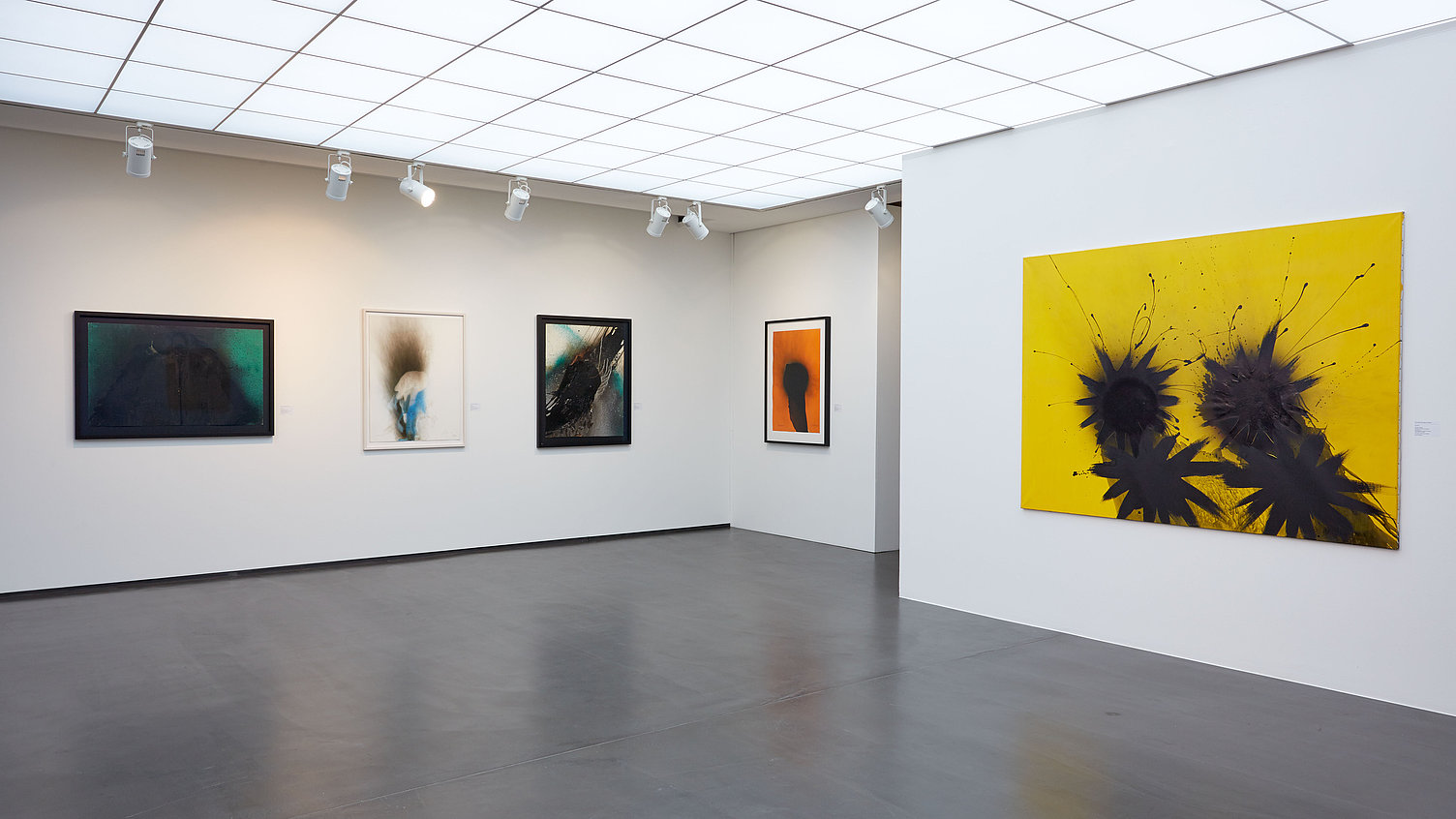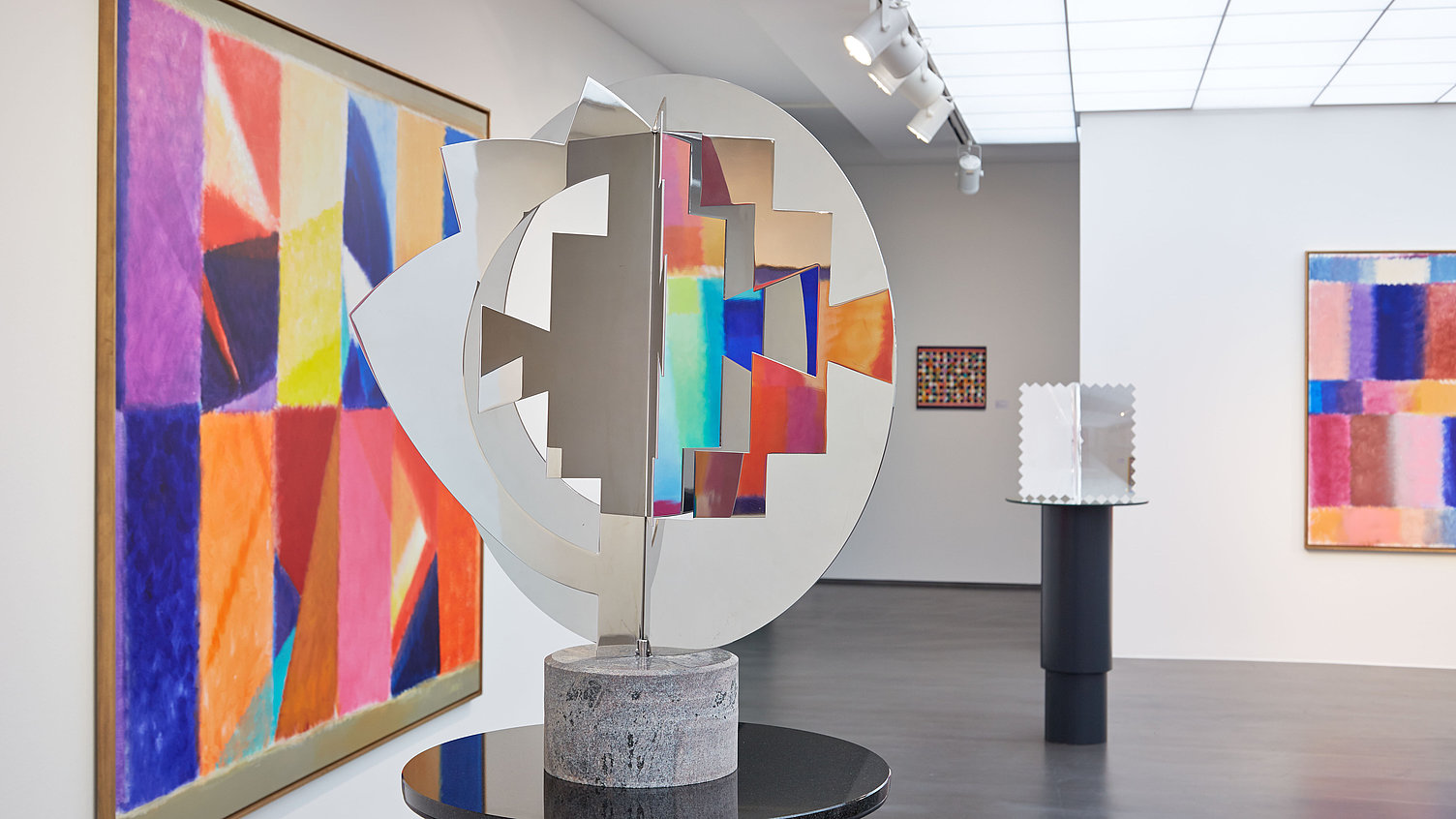Otto Piene | Lucio Fontana
About the exhibition
The Samuelis Baumgarte Galerie presents the internationally renowned artists Otto Piene and Lucio Fontana in an extensive double exhibition with 35 works. Otto Piene (1928-2014), co-founder of the famous ZERO group, has a long tradition of exhibiting in our gallery. His works of fire, smoke and oil paint inspire the viewer again and again. They are characterized by the continuous further development of his technology, resulting from the endeavor to combine art and science in a creative process. In the inspiring synergy with the invasively opened works of the native Argentine Lucio Fontana (1899–1968), the exhibition focuses on the art of classical modernism and the avant-garde of the 20th century.
The vernissage of the exhibition “Otto Piene | Lucio Fontana ”will take place on Saturday, November 16, 2019 at 5 pm. In addition, an extensive color catalog will be accompanying the exhibition.
Born in 1928 in Bad Laasphe, Westphalia, and raised in Lübbecke, Otto Piene studied art and philosophy in Munich, Düsseldorf and Cologne. As a co-founder of the ZERO group around Heinz Mack and Günther Uecker, Piene also embarked on new artistic paths. The Samuelis Baumgarte Galerie shows as one of the highlights of the exhibition the early grid work from the ZERO period Untitled, 1957/58, Oil on canvas, 30.4 x 69 cm.
The most defining feature of Piene's unmistakable artistic expression, however, is the lighting of a fire on the previously painted canvas. These fire pictures are created by the enormous heat development on the painting grounds, which have previously been primed with color and designed with individual color motifs. During the firing process, the applied paint heats up, throws bubbles and encrusts after cooling, as in Waves, 1975, Fire, smoke, oil on canvas, 122 x 122 cm. The point in time at which the fire is extinguished is decisive for such a successful picture. If the burning process takes too long, it will destroy the canvas. But Piene never uses fire destructively. Rather, he lets fire and smoke repaint the canvas. The picture created in this way is therefore subject to chance, because the expansion of the color under heat and the development of smoke that surrounds the point of fire like another picture element on the canvas cannot be calculated. This very own dynamic in the creation process represents a special charm of these fire pictures, for which Yellow, 1975, Fire, smoke, oil on canvas, 199 x 255 cm is another outstanding example.
Fire also means light, which for Piene is a fundamental theme in his work. Piene takes up the intense play between light and darkness in his light sculptures. Copper Play, 2011/14, Copper, light and motor, 125 x 125 x 18 cm paints fascinating worlds of light on the surrounding walls of the gallery, the images of which are constantly changing due to the rotation. Only the dark surroundings of the room make the observer involuntarily think of a clear starry sky at night.
The firing process is also of great importance for the composition of the ceramics created in his late work. Works like Rainbow Ceramics, 2014, glaze on clay, 95 x 142.5 x 6 cm are a fascinating example of this. The resulting elevations on the surface give the work its very own structure, the resulting light-shadow effects a very unique dynamic. The applied glaze gives the ceramics their shine in the end. As a result, clay, a dull material, reflects the light and picks up again what is important to Piene, from shine and warmth to heat.
The Argentine-Italian artist Lucio Fontana deals with the spatial quality of sculptures and paintings and founded the art movement of spatialism. The departure of two-dimensionality, of traditional painting and its smooth surface is elevated to a philosophical-compositional image program in Fontana's spatial concepts, the Concetto Spaziale.
His canvases, which are often monochrome, are provided with characteristic cuts or perforated in a calculated manner; one work presented in our gallery is, for example, Concetto Spaziale, 1962, Oil, holes in lacquered canvas, 62 x 76.4 x 7 cm. This creates complex energetic patterns that oscillate between a dynamic joy in experimentation and well thought-out destruction of the painted canvas. Fontana recorded these highly innovative artistic ideas in his Manifiesto Blanco (White Manifesto, 1946), as the initial of a new genre of art located between architecture, painting and sculpture, which redefined both the dynamics of the space and future installations Significantly influenced generations of artists.
In the course of his artistic development, as a student of the famous Italian sculptor Adolfo Wildt, Fontana increasingly realized his creative visions in abstraction. With his friends, Fausto Melotti, Atanasio Soldati and Luigi Veronesi, he also founded the Italian section of the Parisian artist group »Abstraction-Création«, whose stated aim was to give abstract art a new focus, also with regard to artistic media. From the mid-1930s onwards, Fontana began to implement his literally large-scale artistic ideas with ceramic works such as Concetto Spaziale, 1954, holes and incisions in painted ceramics, 25.5 x 30 cm, which ultimately enabled him to participate in the 17th Venice Biennale made possible. It was not until 1947 that Fontana returned to Italy after his exile in Argentina to resume his artistic career in Europe.
In addition to numerous other manifestos, Fontana also campaigned for the end of static art genres. With works such as Concetto Spaziale, 1957, oil and sand on canvas, 39.5 x 50 cm, he stood for a break from the conventional use of artistic media throughout his life. In his work he then exploded the traditional ideas of painting and created with his "Buchi", the perforated and "Tagli" the cut canvases, the world-famous turning point through a visionary work of shadows, inclusion of the environment, form reduction and the destruction of the metaphorical basis of academic-artistic development.
Otto Piene and Lucio Fontana both pursued with their oeuvre and in their very own artistic way a philosophical-technical approach of the destruction of traditional ideas about modern art. Today you are rightly taking your place with your unique visionary concepts as pioneers of postmodern art of the 21st century in art history.
From 16 November 2019 to 01 February 2020 the exhibition „Otto Piene | Lucio Fontana“ will be presented at the Samuelis Baumgarte Galerie.
Opening Hours
Monday - Friday from 10:00 a.m. to 6:00 p.m. and Saturday from 10:00 a.m. to 2:00 p.m.
Video
Information
Opening: Saturday, 16 November 2019, 5 p. m.
Press
'Kunst mit Genuss', Top Magazin, Winter 2019
'Mit Feuer malen', Westfalen-Blatt, 14.11.2019
'Spiel mit Feuer und Rauch', Neue Westfälische, 14.11.2019
'Preview Dinner' Welt am Sonntag, 01.12.2019


